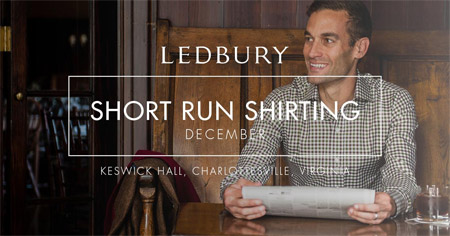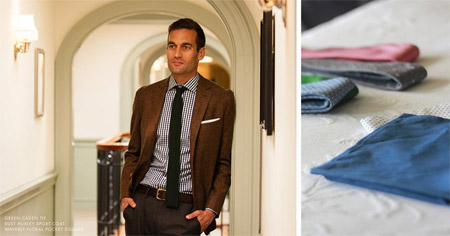Ask any web designer and they’ll tell you that the visual quality of a website is heavily dependent on great photography.
It’s true, great photography helps to tell your website visitors what you do, what your products are like, use cases for products or services, and can even help inform website visitors about your staff and office.
Photography should, without a doubt, be an important consideration for your website redesign. Here are some common objections we hear when we recommend new photography for websites. Have you ever said these things?
“We already have photos that we can use.”
We hear this one a lot. It’s probably the most popular objection to getting new photography, and the inspiration for writing this blog post. As a matter of fact, I wrote down a quote from one of our clients that upon seeing the finished website for the first review, said, "Our photo selection is slimmer than I initially thought." Unless you’re in a large company with deep pockets, you probably won’t have an existing photo library that’s good enough for use on a top-notch marketing website.
Even though you may already have a small photo library, the photos may not represent the image that you want to convey on your new website. As we design websites, we consider how the company should be portrayed through photography and how photos can articulate what the company does, what it is good at and the image/positioning of that company.
The existing photography may not convey your brand messages. As esoteric as this sounds, photography can have a huge impact on the opinions a prospective customer forms about your company.
Tip: If you do have existing photography that you want to consider using, reach out to your designer and review it together. Your designer can give you feedback from a non-biased, third party perspective.
“Someone in our office has a camera and can go take some pictures.”
Just because someone in your office is a shutterbug doesn’t mean that they can get the photos that you need to make your brand stand out online. It also doesn’t mean that they are truly good at photography. If they were that good, they would be doing it for a living, right?
Truly good photography takes more than a camera. It takes great lighting (equipment, usually) and composition skills. Your co-worker is not likely to have the equipment, the compositional skills or the ability to translate your company’s brand through photos.
One company that gets it right is a local men’s fine clothing retailer here in Richmond -- Ledbury. Ledbury’s images are captured in the same style and have been for quite some time. The shoot locations have changed, but their style articulates their brand. As their brand has matured, their photography has as well. In the recent “Short Run Shirting” look book, they include stunning product imagery as well as shots that show the kind of place that a “Ledbury man” might take his sweetheart on a long weekend. The photography tells a story – not just of the products, but also the types of men that are their customers or aspire to be their customers.
 From the Ledbury's website: Short Run Shirting feature.
From the Ledbury's website: Short Run Shirting feature.
 From the Ledbury's website: Short Run Shirting feature.
From the Ledbury's website: Short Run Shirting feature.
 From the Ledbury's website: Short Run Shirting feature.
From the Ledbury's website: Short Run Shirting feature.One other consideration -- does your co-worker’s camera shoot at a resolution that’s suitable for web and print? Maintaining brand across web and print is important, and you don’t want to use a photo on the website that can’t be used in your printed material.
“You can just use the photos off our current website, right?”
This is always a touchy subject. Technically, if your company has existing photography in high-resolution format, it can be used on a new website. But there are 2 things to consider before you use them.
The first is that the existing photos need to be “on brand.” In other words, they need to articulate the message and portray the “attitude” of your company. For example, a wealth management firm that is young and finds creative investing solutions for their clients should not have traditional studio headshots on their website. Instead, the photos need to be taken in a more creative setting with a more casual feel, perhaps in a candid setting where employees are assisting customers.
Second, the existing photos that you want to re-use on your new website must be available in high-resolution format. No designer is going to pull a small web image off of your existing website and use it on your new website.
Tip: Photos can only be scaled down and made smaller. Enlarging a photo will result in lost image quality. See the small photo at actual size below. If I were to enlarge that photo (see the enlarged photo below the small one), you’ll notice that the image gets blurry and there’s significant loss of quality. To say this makes your website look amateur is an understatement.
 You may have small images like this on your website that you think you can use on your new website.
You may have small images like this on your website that you think you can use on your new website.
 This is what the same image looks like when enlarged. You can really see the loss of detail and quality.
This is what the same image looks like when enlarged. You can really see the loss of detail and quality.“We can use stock photos.”
Designers cringe to hear this. The fact of the matter is that most stock photos won’t accurately portray your business. Unfortunately, most affordable stock imagery is generic and not that good.
There is some good stock imagery available, but it’s expensive. Remember, you need to buy images that can be used in print and web in case you decide to use them offline, and buying quality high-resolution stock imagery costs just as much as a professional photographer if you consider that a pro can get 50-100 great shots in a day.
The worst part about using stock photography is that any other company can buy and use the same photo you choose. Imagine how confusing it would be to your prospective customer if they saw the same large image on your homepage and your competitor’s homepage.
Don’t cut corners when it comes to your website photography. Let your creative team or designer direct a photo shoot with a professional photographer. You get what you pay for. In most medium-sized cities in America, you can hire a pro photographer for a day for around $1,500. The images you get from this shoot will take into account your company’s brand style and be uniquely yours.








